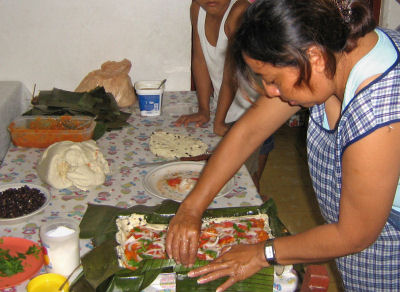Looking for ways around the increased food prices in Mexico
20/06/2008

Update from June 2008
1 kg of rice currently equals 9 subway tickets, 8 trips by bus
Food prices in Mexico have risen enormously since December 2007. SOS Children's Villages is continuing to help children and families to meet their basic needs and for other avenues to overcome soaring prices.
At least 5.2 million in metropolitan Mexico City (of a total of 30 million inhabitants in the greater metropolitan area; overall country population 103 million inhabitants) do not have easy access to food. They are the ones suffering most from the increased food prices. The situation for the already poor and disadvantaged people will worsen as the prices continue to increase and it has become more difficult to cover their daily basic needs.
Many people started moving from the countryside to major urban areas some 15 to 20 years ago in the hope of finding work. This resulted in big clusters of urban poor surrounding these cities. The low wages were based on the premise that food is cheap. Now that the food prices have increased immensely without a corresponding rise in wages, the urban poor are the ones who are affected most. Contrary to those in rural areas, these people do not have the option of cultivating food to supplement what they can buy.
People in Mexico mainly live on rice, beans, tortilla, corn, and chilli. Rice is one of the main products in the Mexican’s diet. The country does not produce enough of the cereal and is dependent on importing 52.5 % from elsewhere. During the first two weeks of May, its price increased by about 14% (a total increase of 40% since December 2007). The costs of other staple foods have also risen tremendously: for tortilla one now pays an additional 22%; for chicken an additional 9% and for bread there is an extra cost of 6%. Soup and ground meat have become slightly cheaper, but all in all the price increase prevailed.
Children in the whole country are affected. President Felipe Calderón announced an emergency plan to deal with the crisis. In a television speech on 26 May he guaranteed to take measures such as lowering taxes in order to keep staple food prices affordable. For the less fortunate families he wants to secure access to affordable basic food such as maize flour and milk.
Affects on life
Like in many other countries the problem is not food shortage, but its affordability. Many Mexican people spend most of their income on food. How are people coping with the soaring food prices? There has been a shift in what they buy. As not everything is affordable these days, food is bought in smaller quantities.
The situation is similar in the SOS Children's Villages, where ways have to be found to cope with the price increases. As the SOS families have a fixed budget that has not yet been adapted, it has become a big challenge to cover all food expenses The SOS mothers shop around and look for cheaper food in order to provide for their children. When Maria goes to the market to buy her weekly demand of cereals, vegetables and fruit, she takes some extra time to compare the prices in order to make sure she gets a good bargain. She, as many other SOS mothers, has to reduce other expenses such as artistic activities in order to use this money for food. Despite this extra challenge, the children in the SOS Children's Villages are attending school and receiving all support they normally would.
Since the situation has become worse, SOS Children's Villages has witnessed that many families who receive support in the framework of the family strengthening programmes, now use financial support solely for food. Lariza A. Meléndez Enríquez from SOS Children's Villages Mexico and responsible for sponsorship points out, that "even before this food pricing crisis it was very difficult to handle this programme with just $20 per child per month. Nowadays it is almost impossible. Moreover, as many more families are finding it harder to meet their basic needs, many families are turning to SOS Children's Villages' family strengthening programmes. However, SOS Children's Villages Mexico says that "we do not have the spaces to assist all families who need this programme."
Reasons for the price increase
In Mexico a combination of several factors amounts to the increase of food prices.
One of the main reasons that has to be considered, is that due to the Mexican economy's close linkages to the US economy, the depreciation of the US Dollar strongly affected the price increase of agricultural products. Mexico does not produce enough food for consumption and thus a high percentage of food has to be imported.
SOS Children Mexico is witnessing increased strain on families in the communities it works in. In its efforts to tackle the situation, it intends to join forces with other NGOs.
Relevant Countries: Mexico.